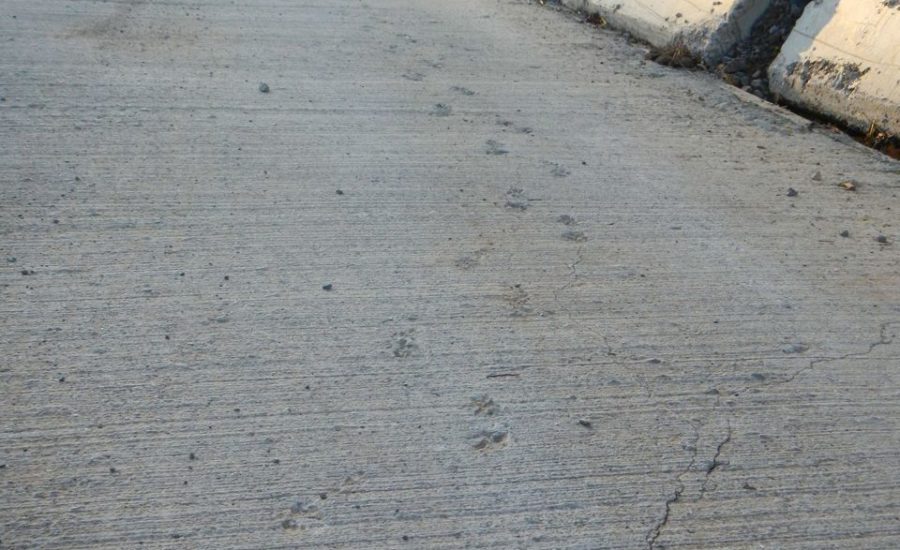Sometimes it is difficult for tracking geeks to understand why everyone else is not into tracking. When you realize the holistic breadth of tracking, the powers of perception it gives you, and the joy you find in the practice it can indeed be hard to believe that more people aren’t tracking.
I believe there are several factors and misconceptions that keep people away from tracking. In this essay I will attack one common misconception.
“I can’t track in the city!”
In the last decade we have gone from a planet where most people lived in rural areas to a planet where most people live in cities. This is one of the most powerful demographic trends on the planet and appears to be steady. In most of the “West” we are saddled with an intellectual heritage that falsely imposes a Nature vs Man dichotomy on the landscape. We see places as either Wild or Not Wild. This bias runs SO deep that many people don’t even see nature at all when they are in urban areas.
Modern studies of the brain have shown what sages have long known: You don’t see what you are not looking for. Your perception of reality is not unbiased or complete. Instead, your perception is shaped and filtered by your belief and experiences. If you “know” that tracking is something done in the “wild” places then you will not see the tracking opportunities all around you in the cities and suburbs.
Most would-be trackers and many experienced trackers falsely assume that there is no tracking to be done outside of the Regional Park trails or National Seashore dunes. They feel like they have to travel in a car to a designated “wild place” to do any legitimate tracking. If you believe this and shut off your tracking when in urban areas you are missing out on the tracking opportunities that are most relevant to your daily life! You are missing out on tracking 90% of your daily life!
Does it matter if you can distinguish the tracks of three different species of endangered sand crabs but you can’t recognize the alarm calls of the urban squirrels in your backyard? Can you recognize the gait change of a short-tailed weasel in the Sierra but you don’t know how the neighborhood raccoons squeeze through your cat door and eat your Pop-Tarts?
Animals and plants are unburdened by the Nature vs Man dichotomy that plagues our worldview. Dandelions, deer, finches, and bears don’t know that there is no nature to be found in the urban areas. They don’t know that they are supposed to stay in the “Wild Places.” They don’t wait until they are in a regional park to leave an interesting trail or drop a steaming scat. We need to follow their example (not necessarily pooping on the sidewalk). We need to question the Nature vs Man dichotomy and recognize that nature is everywhere. Tracking opportunities are everywhere. Some of the best bird language opportunities and wildlife tracking lessons can be found in suburbs and urban parks. Think outside the box! Keep your tracking mindset turned on! Jim Sullivan, a holistic tracker in California calls this “24/7 Tracking.” Not only will 24/7 tracking improve your skills faster it will also provide you with insight into your native environment (the majority of us live in urban areas not Regional Parks).
Urban wildlife is not the only thing to be tracked in cities and suburbs. Try broadening your perspective and noticing tracks from humans and other domestic animals. Why are so many avid trackers so uninterested in domestic animals (humans included)?! Is it because they are so familiar that we know everything about them? Or is it because they fall on the wrong side of the entirely arbitrary Nature vs Man dichotomy? Obviously, the latter is true. I challenge anyone who thinks that domestic animals are so familiar and boring because they know everything about them. How many times have you watched the gait of a five year old child in mud puddles? How many times have you examined the hole dug by a pet pit-bull and wondered about the biomechanics of dogs digging?
Animals are not the only things that can be tracked in urban areas. Plants, vehicles, and weather also leave their characteristic marks. Which curbs near your house are covered with skid marks from cars cutting the corner? Can you visualize the trajectory of the cars? Why is the street designed that way? Where can you see the gouges in the asphalt that indicate where cars bottom out? Can you see the tracks of snow, ice, wind, or sun in the urban landscape? How have weeds invaded vacant lots? Are the weeds clustered around edges of buildings or evenly distributed? Have some trees influenced the infrastructure? Can you see plants growing on buildings?
If you have not tried tracking because you think you need access to “Wild Places” then rejoice, for the best tracking is outside your doorstep!
If you are an experienced tracker but tend to overlook urban tracking, then reconsider the Nature vs Man dichotomy and turn on your 24/7 tracking. This perspective shift will super charge your learning process and provide you with relevant information about your native environment.
Thanks to Jim Sullivan for the term “24/7 Tracking”. See his website for more information and for a schedule of talks and classes in California. http://www.animaltrackingandbirdlanguage.com/
